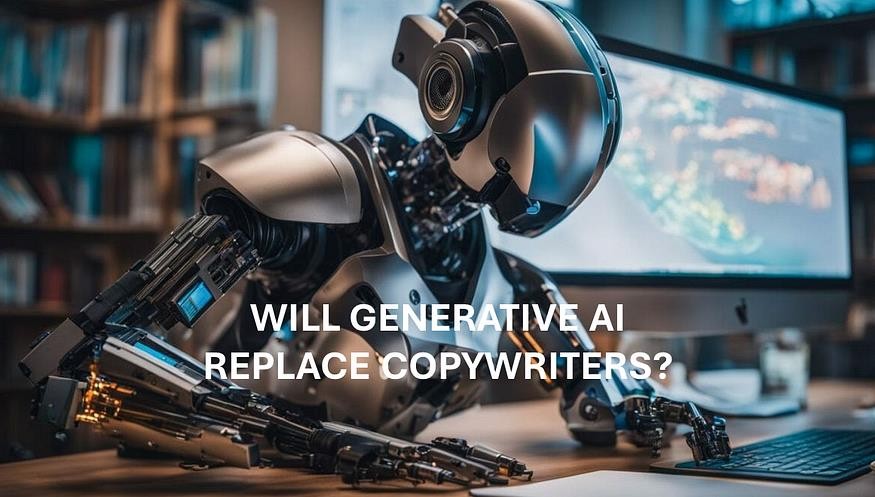The rapid advancement of generative AI technologies has sparked a significant debate about the future of various professions, including copywriting. With AI systems like GPT-4 capable of producing coherent and contextually relevant text, it is natural to question whether these machines will eventually replace human copywriters. While generative AI has demonstrated impressive capabilities, the likelihood of it fully replacing copywriters is nuanced and depends on several factors, including the nature of the work, the complexity of creative tasks, and the value of human touch in communication.
The Capabilities of Generative AI
Generative AI, powered by deep learning algorithms, has made substantial progress in natural language processing. These systems can generate text that mimics human writing, from news articles to marketing copy and creative content. AI models are trained on vast datasets, enabling them to understand context, grammar, and nuances of language. They can produce content quickly and at scale, which makes them appealing for tasks that require repetitive or formulaic writing.
For instance, AI can efficiently generate product descriptions, social media posts, and basic news reports. This ability to churn out large volumes of content at a fraction of the cost and time required by human writers presents a compelling case for businesses to consider AI solutions.
Limitations of Generative AI
- Despite its impressive capabilities, generative AI has significant limitations that make it unlikely to completely replace human copywriters, especially in tasks requiring high levels of creativity, emotional intelligence, and strategic thinking.
1. Creativity and Originality: While AI can mimic existing styles and generate text based on patterns in the data it has been trained on, it lacks true creativity. Human copywriters bring originality, creativity, and unique perspectives to their work, crafting messages that resonate on a deeper emotional level with audiences. They can innovate and create content that breaks conventions and captures attention in ways that AI currently cannot.2. Emotional Intelligence: Effective copywriting often involves understanding and appealing to human emotions. Human writers can draw from personal experiences, cultural nuances, and empathy to create compelling narratives. AI, on the other hand, does not experience emotions and can only approximate emotional content based on patterns it has learned. This often results in content that may lack the subtlety and depth required to genuinely connect with readers.Emotional Intelligence: Effective copywriting often involves understanding and appealing to human emotions. Human writers can draw from personal experiences, cultural nuances, and empathy to create compelling narratives. AI, on the other hand, does not experience emotions and can only approximate emotional content based on patterns it has learned. This often results in content that may lack the subtlety and depth required to genuinely connect with readers.3. Strategic Insight: Copywriting is not just about writing well; it involves strategic thinking, market understanding, and brand alignment. Human copywriters collaborate with marketing teams, understand business goals, and tailor content to fit broader marketing strategies. They can adapt their tone and style to align with brand identity and target audience needs. AI lacks this strategic insight and contextual awareness, limiting its ability to produce content that fits seamlessly into a broader marketing plan.
The Role of Human-AI Collaboration
Rather than viewing generative AI as a replacement for copywriters, it is more realistic to see it as a powerful tool that can augment their capabilities. AI can handle repetitive and mundane tasks, freeing up human writers to focus on more complex and creative aspects of their work. This collaboration can lead to increased efficiency and productivity, allowing copywriters to produce higher-quality content at a faster pace. For example, AI can assist with initial drafts, content ideation, and even proofreading, leaving human writers to refine and polish the content, infusing it with creativity and strategic insights. This symbiotic relationship can enhance the overall quality of the content produced and help businesses achieve their communication goals more effectively.
The Future of Copywriting in the Age of AI
The future of copywriting will likely see a blend of human creativity and AI efficiency. As generative AI continues to evolve, its role in content creation will expand, but it will not render human copywriters obsolete. Instead, the profession will evolve, with copywriters leveraging AI tools to enhance their work and deliver more value. Education and skill development will play a crucial role in this transition. Copywriters will need to adapt to new technologies and learn how to effectively collaborate with AI systems. Those who can combine their unique human skills with the capabilities of AI will be in high demand, leading the way in a new era of content creation. While generative AI has the potential to transform the field of copywriting, it is unlikely to fully replace human copywriters. The limitations of AI in creativity, emotional intelligence, and strategic thinking ensure thathuman touch remains indispensable in crafting compelling and effective content. The future will be characterized by a collaborative approach, where AI serves as a valuable assistant, enhancing the skills and productivity of human copywriters.

